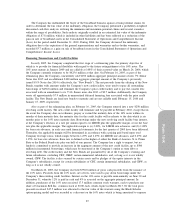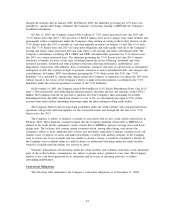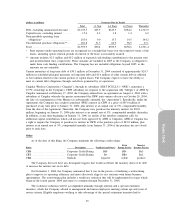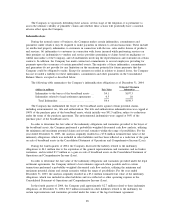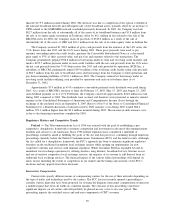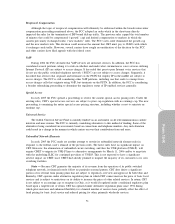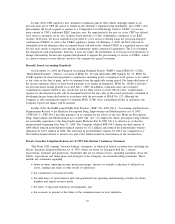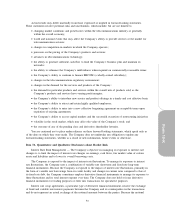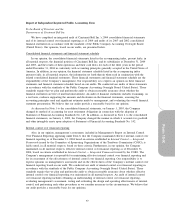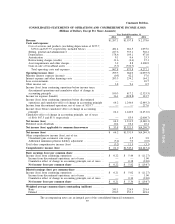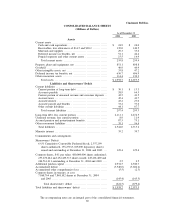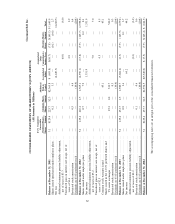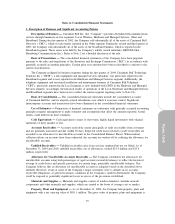Cincinnati Bell 2004 Annual Report Download - page 127
Download and view the complete annual report
Please find page 127 of the 2004 Cincinnati Bell annual report below. You can navigate through the pages in the report by either clicking on the pages listed below, or by using the keyword search tool below to find specific information within the annual report.
Actual results may differ materially from those expressed or implied in forward-looking statements.
These statements involve potential risks and uncertainties, which include, but are not limited to:
•changing market conditions and growth rates within the telecommunications industry or generally
within the overall economy;
•world and national events that may affect the Company’s ability to provide services or the market for
telecommunication services;
•changes in competition in markets in which the Company operates;
•pressures on the pricing of the Company’s products and services;
•advances in telecommunications technology;
•the ability to generate sufficient cash flow to fund the Company’s business plan and maintain its
networks;
•the ability to refinance the Company’s indebtedness when required on commercially reasonable terms;
•the Company’s ability to continue to finance BRCOM (a wholly-owned subsidiary);
•changes in the telecommunications regulatory environment;
•changes in the demand for the services and products of the Company;
•the demand for particular products and services within the overall mix of products sold, as the
Company’s products and services have varying profit margins;
•the Company’s ability to introduce new service and product offerings in a timely and cost effective basis;
•the Company’s ability to attract and retain highly qualified employees;
•the Company’s ability to enter into a new collective bargaining agreement on acceptable terms upon
expiration of existing agreements;
•the Company’s ability to access capital markets and the successful execution of restructuring initiatives
•volatility in the stock market, which may affect the value of the Company’s stock; and
•the outcome of any of the pending class and derivative shareholder lawsuits.
You are cautioned not to place undue reliance on these forward-looking statements, which speak only as
of the date on which they were made. The Company does not undertake any obligation to update any
forward-looking statements, whether as a result of new information, future events or otherwise.
Item 7A. Quantitative and Qualitative Disclosures about Market Risk
Interest Rate Risk Management — The Company’s objective in managing its exposure to interest rate
changes is to limit the impact of interest rate changes on earnings, cash flows, fair market value of certain
assets and liabilities and to lower its overall borrowing costs.
The Company is exposed to the impact of interest rate fluctuations. To manage its exposure to interest
rate fluctuations, the Company uses a combination of variable rate short-term and fixed rate long-term
financial instruments. Because the Company is exposed to the impact of interest rate fluctuations, primarily in
the form of variable rate borrowings from its credit facility and changes in current rates compared to that of
its fixed rate debt, the Company sometimes employs derivative financial instruments to manage its exposure to
these fluctuations and its total interest expense over time. The Company does not hold or issue derivative
financial instruments for trading purposes or enter into transactions for speculative purposes.
Interest rate swap agreements, a particular type of derivative financial instrument, involve the exchange
of fixed and variable rate interest payments between the Company and its counterparties in the transactions
and do not represent an actual exchange of the notional amounts between the parties. Because the notional
53
Form 10-K


